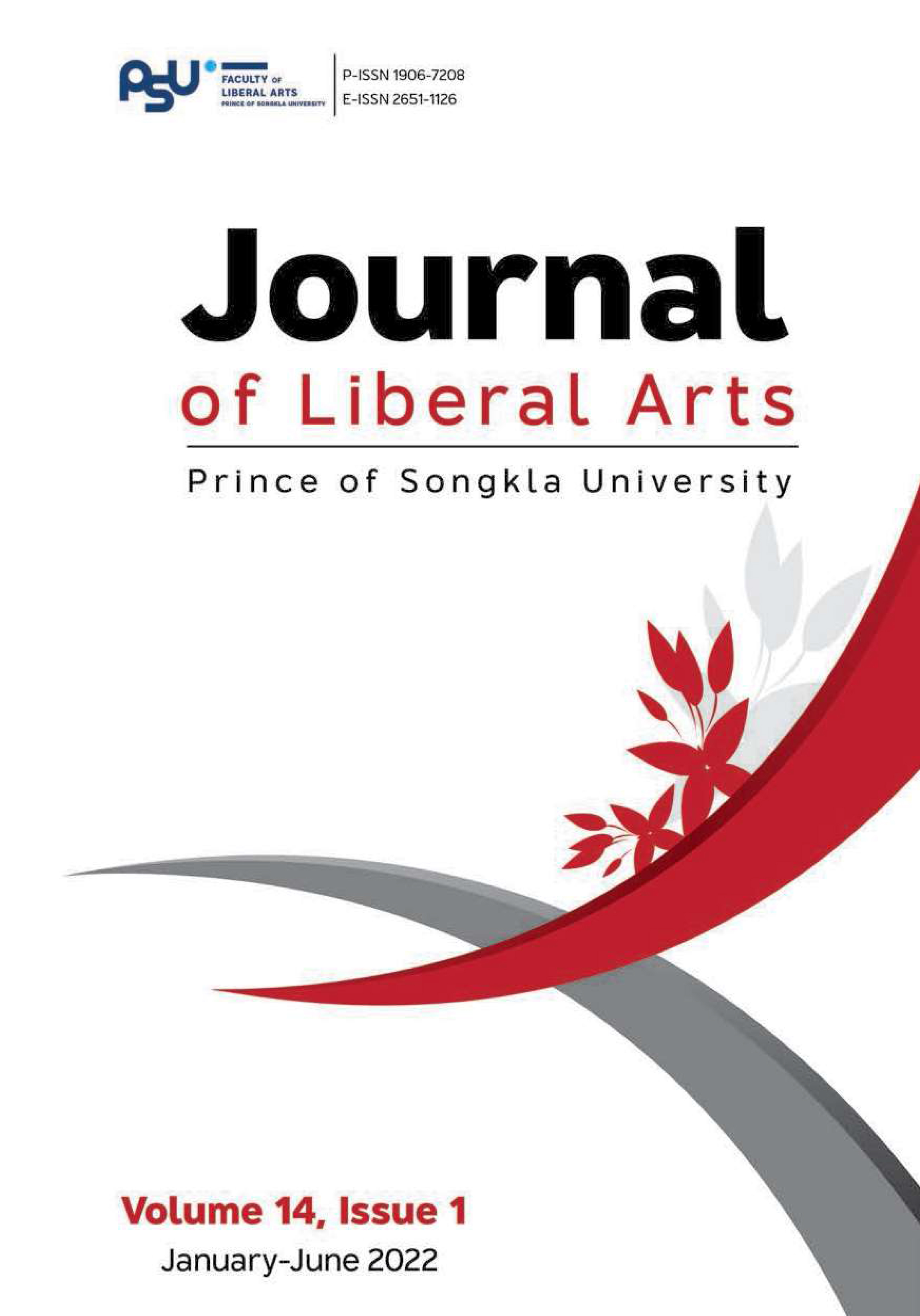The Barrier of Relationships: Dynamics of Social Interaction and Interethnic Political Relation of People in Na Ngam Subdistrict of Pattani under Violent Situations in the Three Southern Border Provinces
DOI:
https://doi.org/10.14456/jlapsu.2022.8Keywords:
dynamics of social interaction, identity, conflict, politicsAbstract
This research examines the relationship dynamics of coexistence and political relations through people’s interactions in social spaces in violent situations from 2004 to 2021. It aims to capture people’s lives in a community in the Na Ngam Subdistrict of Pattani, which
is a community with a long history of settlement and coexistence amongst diverse groups of people. These people have played a part in fostering a sense of community through social spaces in everyday life, including agricultural, economic, and educational spaces. Not to mention the fact that they have constantly been facing violent situations that last for more than a decade. This research used the methods of literature review, fieldwork from 2019 to 2021, participant observation, and in-depth interviews with the Thai Buddhist Village Volunteers. The results have revealed that this ongoing violence, which is progressing toward an intractable conflict, and the government’s military operations to manage the area have transformed the identity of the Thai Buddhists into being part of the conflicts within the military and political sphere of interaction. This transformation has ultimately altered the connections between people of different religions at the community level into political relations, which in due course has gradually shattered social relations among the peoples.
References
Aim-Aur-Yut, S. (2008). “Payah not jadi nayu” (It's very difficult to be nayu): Ethnicity Meaning and Negotiation of Melayu in everyday life. [Master of Arts thesis in Anthropology, Graduate School]. Thammasat University.
Armed, S. (2014). The Cultural Politics of Emotion (2nd ed.). University Press Ltd.
Bodtker, A. M. & Jameson J.K. (2001). Emotion in Conflict Formation and Its Transformation Application to Organizational Conflict Management. International Journal of Conflict Management, 12(3), 259-275.
Coleman, P. T. (2011). The Five Percent: Finding Solutions to (Seemingly) Impossible Conflicts. Public Affairs, Perseus Books.
Coleman, P. T., Kugler, K. G., Bui‐Wrzosinska, L., Nowak, A., & Vallacher, R. (2012). Getting down to basics: A situated model of conflict in social relations. Negotiation Journal, 28(1), 7–43.
Kraus, N. (2000). Race, neighborhoods, and Community Power: Buffalo politics, 1934-1997. State University of New York Press.
Mitchell, C. R. (2006). “Conflict, Social Change and Conflict Resolution: An Enquiry”, In D. B.M. Fischer& B. Schmelzle. (eds.), Social Change and Conflict Transformation, Berghof Handbook Dialogue Series 5,1-24.
National Archive of Thailand. An official document of the Ministry of Education No. Sor Thor 51.9/5 with the subject of the donation for the establishment of a school at Wat Kuan Nok of Monthon Pattani (1 October - 16 December 1909)
Satha-Anand, C. (1990). Challenging Dilemma: Violence and Non-violent Actions. Komol Kimthong Publishing House.
Sirisakdamkeong, P.(2003). The interrelationship between Malay Muslims and the Chinese in the marketplace, "Sai Klang," in Yala province. [Master of Arts thesis in Anthropology]. Silpakorn University.
Stewart, F. (2008). Horizontal Inequalities and Conflict: Understanding Group Violence in Multiethnic Societies. Conflict, Inequality and Ethnicity. Palgrave Macmillan.
Strategic Nonviolence Working Group. (2018). Peace Dialogue: the Path to Face Violence in the Southern Border Provinces. Parbpim Limited Company.
Sutthasat, A. (1976). Conflicts in the Four Southern Provinces. Phithakpracha. The Hut of Plugmet. (2021, August 15). Tuak. Retrieved from http://plugmet.orgfree.com/sk_melayu_dialect_4.ht
Downloads
Published
How to Cite
Issue
Section
License
Copyright (c) 2022 Nisachon Chaimongkon

This work is licensed under a Creative Commons Attribution-NonCommercial-NoDerivatives 4.0 International License.
The authors retain the copyright to their article but the Journal of Liberal Arts, Prince of Songkla University reserves the exclusive rights to first publication.






